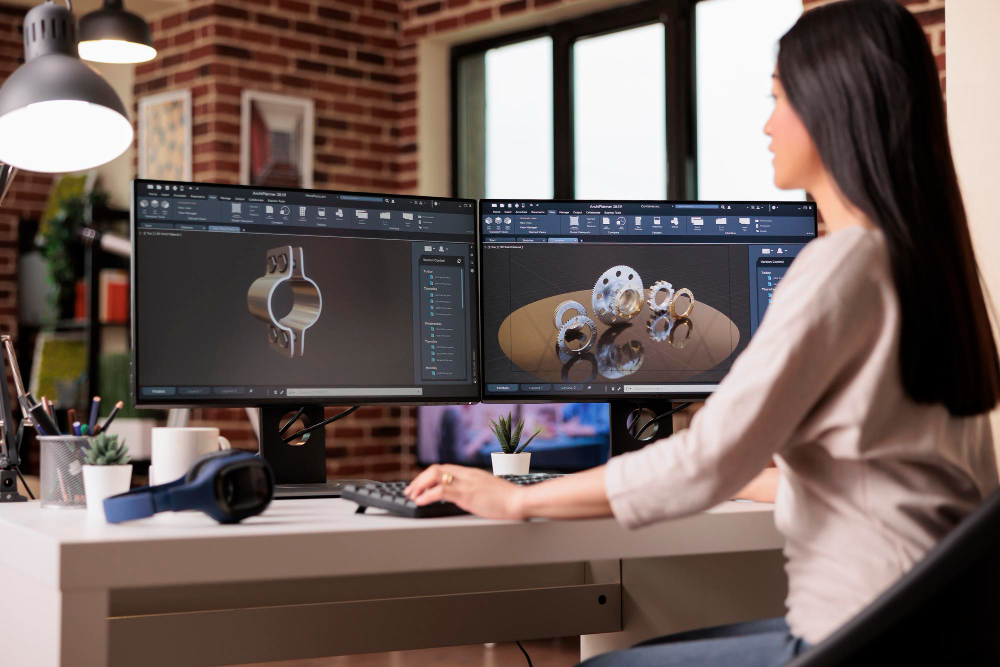Unlocking the World of Three-Dimensional Artistry
Three-dimensional (3D) animation is a captivating and versatile art form that has revolutionized the world of entertainment, advertising, and visual storytelling. From the silver screen to video games, 3D animation brings characters and environments to life in unimaginable ways. In this introduction, we’ll explore the fascinating world of 3D animation, from the initial stages of modeling to the final rendering of lifelike and immersive digital experiences.
Understanding 3D Animation:
From Flat to Full: Unlike traditional 2D animation, 3D animation adds an extra dimension to the storytelling process. It involves creating objects and characters in a digital 3D space, allowing for greater realism and depth.
The 3D Modeling Phase:
- Building Digital Sculptures: The journey begins with 3D modeling. To make digital models of characters, objects, and surroundings, artists need specialized software. This process involves shaping, sculpting, and detailing these 3D assets.
- Software Tools: Common 3D modeling software includes Blender, Autodesk Maya, Cinema 4D, and ZBrush.
- Techniques: Artists use techniques such as polygon modeling, NURBS modeling, and sculpting to craft 3D assets.
Rigging for Movement:
- Adding a Skeleton: To bring 3D characters to life, rigging is essential. Rigging involves creating a digital skeleton or armature for characters, enabling them to move realistically.
- Rigging Tools: Rigging tools and systems vary by software but generally include bones, joints, and IK (inverse kinematics) solvers.
- Motion Capture: Some animations use motion capture technology to capture real-life movements and apply them to 3D characters.
Animating the Scene:
- Dynamic Movements: Animation is where the magic happens. Artists use keyframes to animate characters and objects, creating movements and interactions within the 3D environment.
- Keyframe Animation: Artists set keyframes at specific points in time to define the character’s position, rotation, and scale.
- Animation Curves: Animation curves control the timing and easing of movements between keyframes.
Texturing and Shading:
- Adding Realism: Texturing and shading give 3D objects their visual appearance. Artists apply textures to surfaces to mimic materials like wood, metal, or skin.
- Texture Maps: Common texture maps include diffuse (color), specular (reflection), normal (bump), and displacement maps.
- Shading Techniques: Artists use shading techniques like PBR (Physically Based Rendering) to achieve realistic lighting and reflections.
Lighting the Scene:
- Setting the Mood: Lighting plays a crucial role in 3D animation. Artists place virtual lights within the scene to illuminate objects and characters realistically.
- Types of Lights: Common types include directional, point, spot, and area lights.
- Global Illumination: Techniques like global illumination simulate realistic lighting interactions, including reflections and refractions.
Camera Work and Composition:
- The Cinematic Touch: Camera angles, framing, and composition add depth and drama to 3D scenes. Artists position virtual cameras to capture the action.
- Camera Types: Virtual cameras can mimic real-world cameras, including wide-angle, telephoto, and fisheye lenses.
- Composition Rules: Artists follow composition principles like the rule of thirds, leading lines, and framing to create visually appealing shots.
Rendering the Final Animation:
- Turning Frames into Pixels: Rendering is the process of converting the 3D scene into individual frames that make up the final animation. It involves calculating lighting, shadows, and materials for each frame.
- Rendering Engines: Popular rendering engines include Arnold, V-Ray, and Cycles.
- Render Settings: Artists adjust settings such as resolution, frame rate, and image quality during rendering.
Post-Production and Compositing:
- Polishing the Gem: In post-production, artists enhance the final animation by adding visual effects, color grading, and sound. It’s common to utilize compositing tools like Adobe After Effects.
- Visual Effects: Additions like particle effects, lens flares, and explosions can be integrated into the animation.
- Sound Design: Sound effects and music are synchronized with the animation to create a complete sensory experience.
Distribution and Enjoyment:
- Sharing the Art: Once the animation is complete, it can be shared through various platforms, including theaters, television, streaming services, and video game consoles.
3D animation has revolutionized the art of storytelling and entertainment, offering limitless possibilities for creativity and immersion. Whether it’s bringing fantastical creatures to life, visualizing architectural designs, or crafting epic cinematic experiences, 3D animation is a powerful tool that continues to shape the way we perceive and interact with digital media. Aspiring animators and enthusiasts alike can explore this captivating world, bringing their imaginations to life in stunning three-dimensional detail.

Jass
Jass earned her bachelor’s degree in Computer Science, transitioning into a profession as a content writer. With a keen mastery of words, she takes pleasure in expressing her thoughts and ideas creatively. Her ability to captivate audiences with her imaginative write-ups stands out as one of her notable strengths.



